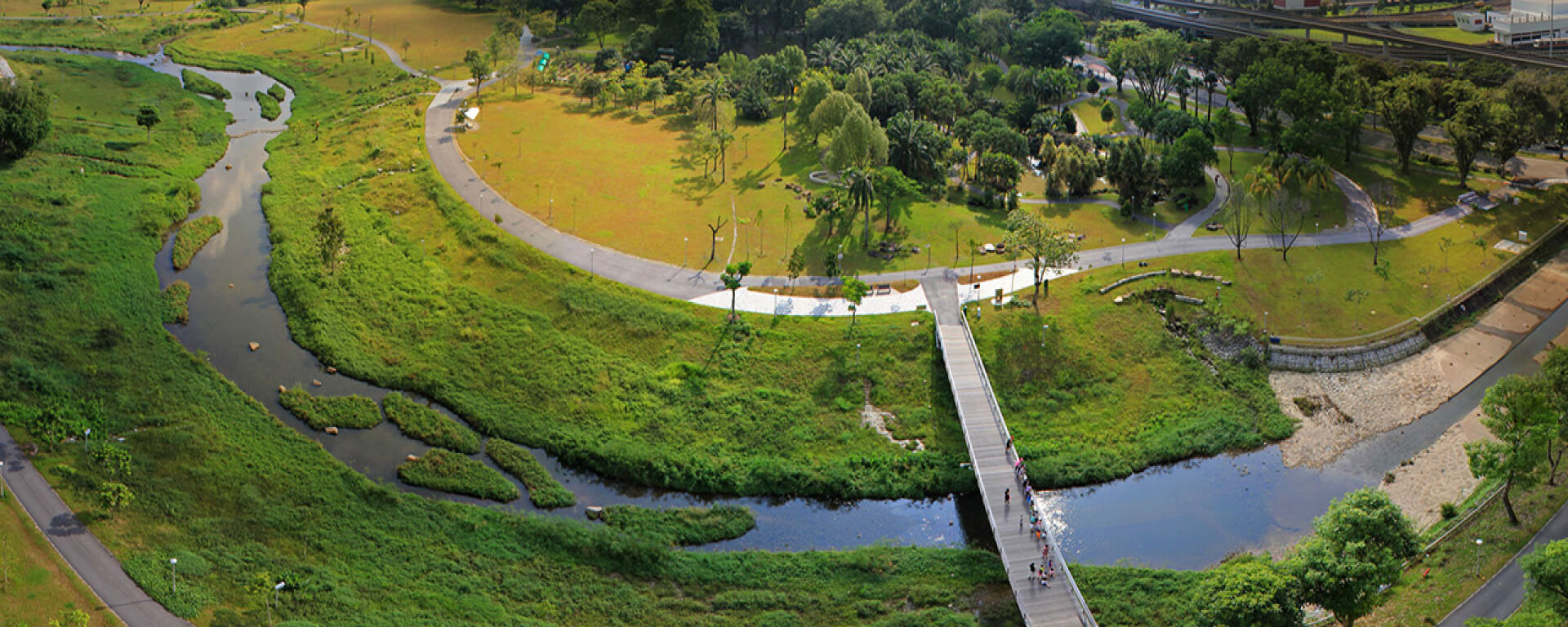Sustainable Infrastructure for Emerging Asia
As countries worldwide start to deal with the impacts of climate change, environmental pollution and social inequality, sustainability has emerged as an important topic for governments, corporates, multilaterals, banks and non-banking financial institutions. However, one question often asked is whether sustainable infrastructure can be easily adopted for emerging markets and create a runway for sustainable growth.
As countries worldwide start to deal with the impacts of climate change, environmental pollution and social inequality, sustainability has emerged as an important topic for governments, corporates, multilaterals, banks and non-banking financial institutions. However, one question often asked is whether sustainable infrastructure can be easily adopted for emerging markets and create a runway for sustainable growth.
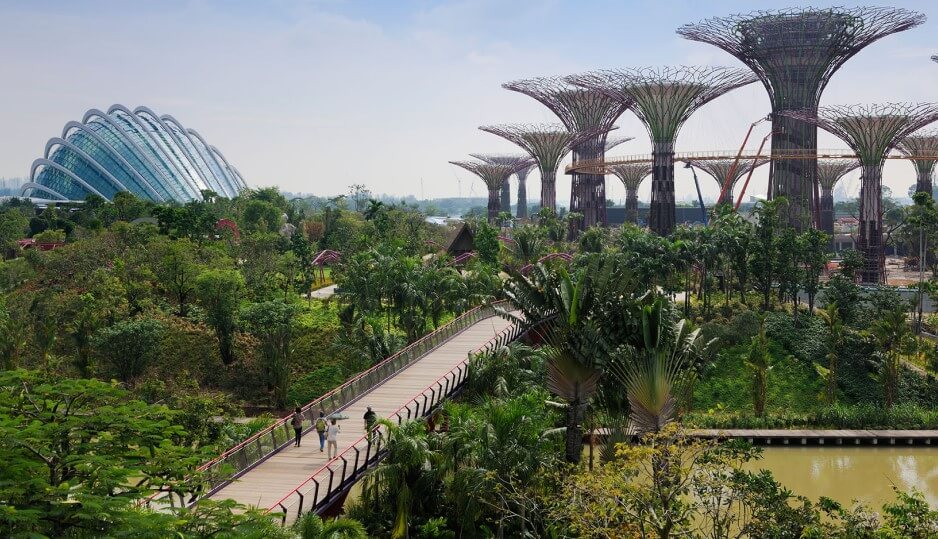
Blue-green infrastructure, such as Gardens by the Bay, offers a vision to the future of sustainable infrastructure for emerging Asia
(Source: Gardens by the Bay)
Importance of Sustainable Infrastructure
ADB estimates that USD$1.7 trillion of annual investment is required for Asia to meet its demand for infrastructure. For countries to ensure sustainable growth, infrastructure development in areas such as water, energy, transportation and waste must be constructed and operated with a sustainable outlook. In addition, sustainable infrastructure will be required to deal with the impacts of climate change, such as rising sea levels and the increasing occurrence of severe weather events . In light of emerging Asia’s rapid growth in recent years, sustainable infrastructure will be needed more than ever before.
Neglecting sustainable infrastructure investments can result in dire environmental and social impact. In some Emerging Asian cities, rapid urbanisation has led to traffic congestion, reduced green spaces, increased waste generation and sinking land area, due to excessive groundwater extraction. These are challenges governments are still trying to resolve, and highlight the need for sustainable infrastructure as Emerging Asia continues to develop.
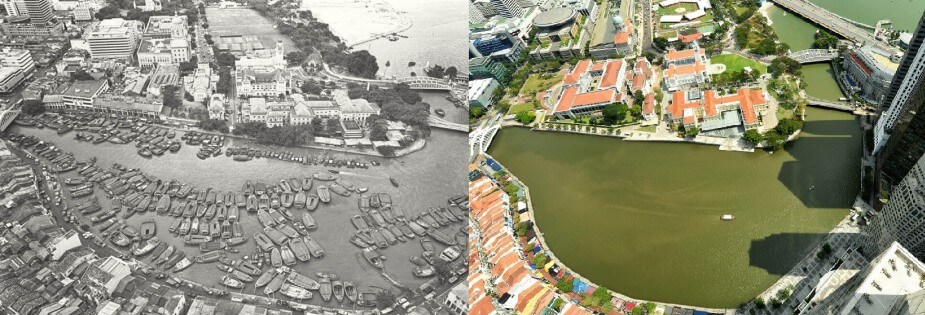
Sustainable infrastructure offers a solution to squalid and cramped conditions, creating a vibrant and liveable environment for residents.
(Source: The Straits Times: The Singapore River Then & Now)
Role of Cities in Economic Growth
With the growth of city centres around the world, countries have come to understand the role cities play in generating economic growth. For instance, Sydney generates 24% of Australia’s Gross Domestic Product (GDP).
The role a city plays in generating economic growth is greater than ever and municipal governments in Asia have come to realise the importance of the city’s health in achieving such growth.
One example is the Cheonggyecheon water stream restoration project in Seoul, where the restoration helped to reduce traffic and added more green spaces, resulting in economic growth through tourism and redevelopment of the surrounding area. Land values also benefited as a result, increasing around 25 to 50 percent post restoration.
Another example closer to Southeast Asia would be Singapore’s Bishan-Ang Mo Kio Park. Situated in Singapore’s heartland, the park is part of the Active, Beautiful, Clean Waters Programme (ABC Waters) initiative by the Public Utilities Board (PUB). ABC Waters is a long-term initiative to transform Singapore’s water bodies beyond their functions of drainage and water supply, into vibrant, new spaces for community bonding and recreation. According to Søren Holm Johansen, Group Executive Director at Ramboll Group, whose firm advised on the project, the concept of liveable cities must be demonstrated in a tangible way, and Bishan – Ang Mo Kio Park is a symbol of what the possibilities are.
Such examples emphasise the importance of sustainable social infrastructure in creating a more sustainable, attractive and liveable environment that will enable the city to attract talent whilst ensuring sustainability efforts are commercially viable.
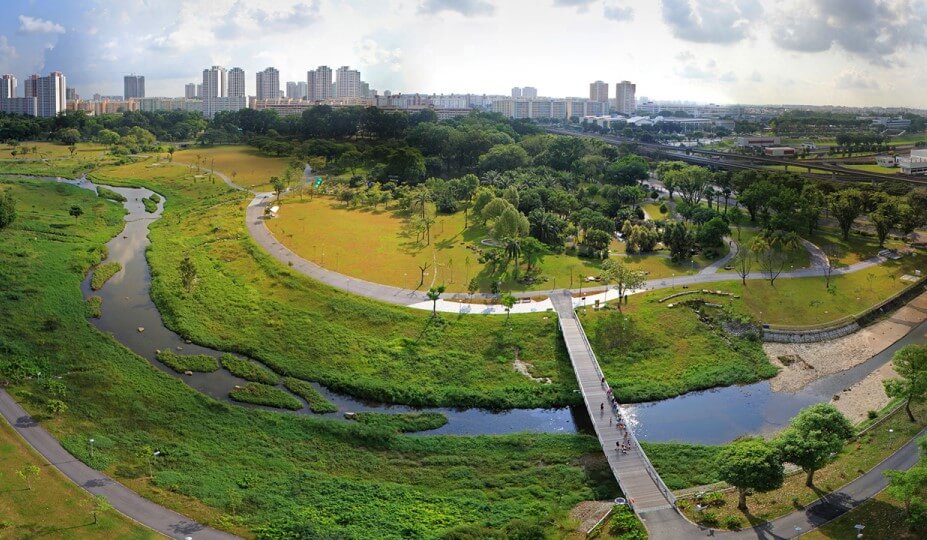
The Bishan – Ang Mo Kio Park showcases the importance of green sustainable infrastructure in improving a city’s health and liveability
(Source: Ramboll Dreiseitl)
Sustainable Transportation in Emerging Asia
The importance of cities as beacons of growth in countries is further highlighted by the role a city plays in facilitating movement of goods and people. Nick Merritt, the Global Head of Infrastructure, Mining and Commodities at Norton Rose Fulbright, highlights how it is in the interest of all stakeholders of a city to create such an environment, as cities need to allow for frictionless exchange of goods, services and people.
Creating a more efficient environment for such exchanges will help the city to grow faster, attracting more investors and companies to the city and generate wealth for its citizens.
Examples of infrastructure that enable such an environment include mass transportation systems, which can help to transport people from suburbs and city outskirts, to work in the cities. Improved transportation connections between regions will help to increase physical access to work in the cities, potentially helping to alleviate poverty. These transportation systems can also help to reduce dependence on personal transportation such as cars and motorcycles, helping to alleviate traffic congestion as well as associated vehicular emissions.
These are similar objectives that the Land Transport Authority seeks to achieve though the Singapore Land Transport Master Plan 2040, creating a more sustainable transport infrastructure through the expansion of Singapore’s rail network, adoption of electric bus fleets and encouraging the use of bicycles through enlarged walkways and pavements by 2040.
Such transportation systems can help the region to reduce its dependence on fossil-fuelled transport such as cars, helping to alleviate road congestion, whilst stimulating economic growth through improved efficiency and ease of access between cities. Through sustainable forms of transport, Asia will be able to continue its growth while ensuring that existing social and environmental issues can be resolved.
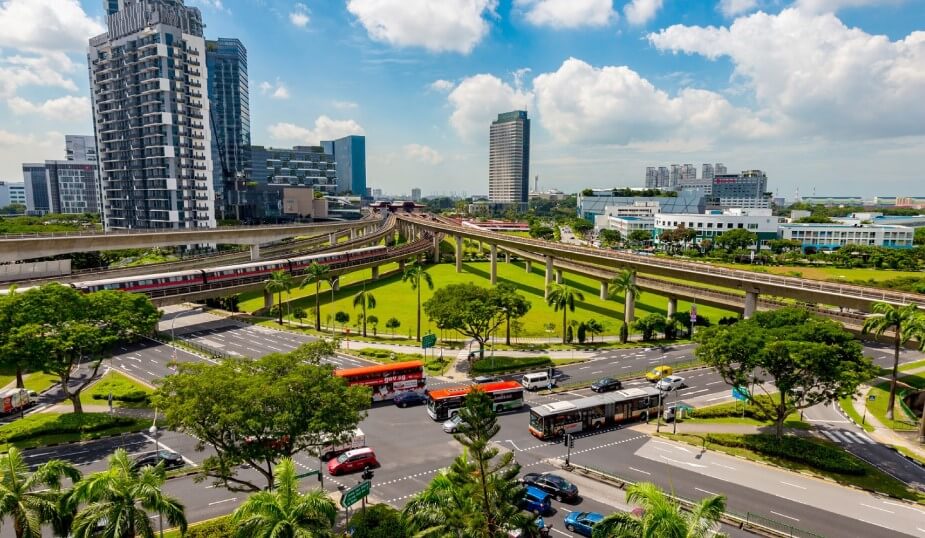
Singapore’s public transport system seeks to create a sustainable, accessible and efficient form of transport for all
(Source: Land Transport Authority)
Preventing Waste for Asia’s Future
With rapid urbanisation, another challenge is waste management. For example, whilst Phnom Penh’s population has nearly doubled over the last decade, a significant percentage of its residents are not served by refuse collectors.
Efficient waste management is crucial for a city to grow sustainably, given how ineffective waste management leads to unsanitary and unhealthy living environments. Traditional waste management by landfilling is unsustainable as land availability is finite, resulting in opportunity cost between using land for landfills or future infrastructure developments.
The importance of waste management is highlighted by the establishment of Singapore’s Integrated Waste Management Facility (IWMF). The IWMF was commissioned by PUB and the National Environment Agency (NEA) as part of the Deep Tunnel Sewerage System (DTSS) Phase 2 Project. The IWMF seeks to treat Singapore’s solid waste through the utilisation of sustainable waste-to-energy (WTE) technology. The IWMF showcases an alternative to landfills, with the ability to effectively process 5,800 tonnes per day of incinerable waste when completed in 2024 , reducing Singapore’s dependence on landfills or other traditional forms of waste management.
The IWMF forms part of Singapore’s strategy to reduce waste and showcases the possible solutions of sustainable waste management that can be applied to Emerging Asia. With the urban population of Emerging Asia estimated to increase twofold by 2050, efforts need to be made in reducing waste generation, by reducing, reusing or recycling waste as part of the overall strategy to improve waste management in Emerging Asia, in combination with urgent improvement of waste management systems, so as to enable Asian cities to be safe and sustainable for its residents to live in.
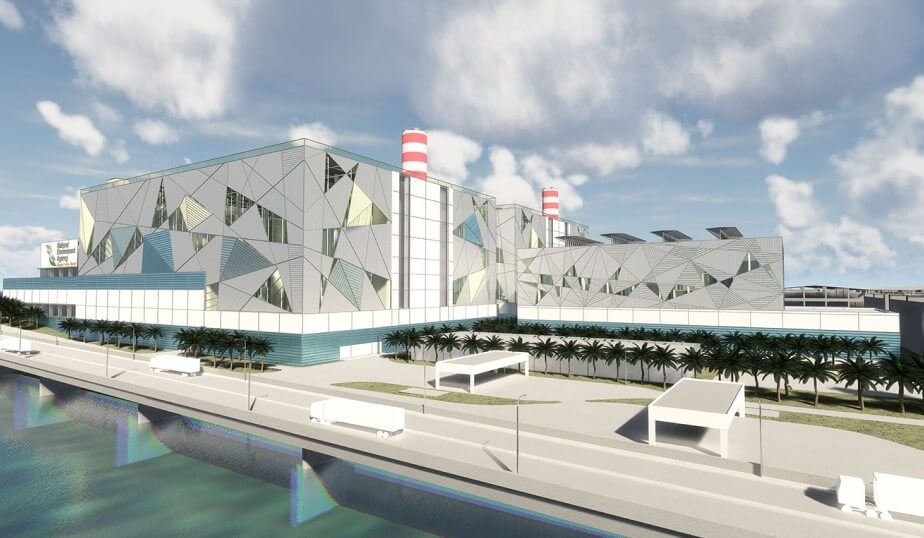
The Integrated Waste Management Facility (IWMF) forms part of Singapore’s Zero Waste Nation Strategy and commitment to sustainable waste management
(Source: Ramboll)
Flood Management in Emerging Asian Cities
Urgency is also required to build up infrastructure resilience as climate change require cities to adapt. Low-lying cities in Asia are susceptible to flooding in recent years as a result of monsoon storms and hurricanes, which results in billions of dollars of economic and infrastructure damage each year.
Examples include the Super Typhoon Mangkhut, with economic losses in Hong Kong and across China potentially reaching $50 billion on top of the $16 billion to $20 billion estimated damage exacted in the Philippines. The impact in the Philippines could be between 5 to 6 percent of its gross domestic product for the year. Another example would be the 2011 Thailand Floods, which caused approximately $45 billion in economic damage.
It is also important to highlight other types of “creeping” disasters in the Emerging Asia, such as intensifying rainwater resulting in flooding, which occur more regularly and are not adequately dealt with. These include low-lying areas in places such as Myanmar and Vietnam, emphasising the need for solutions to proper stormwater management.
Today, one can utilise technology and data to predict where floods may occur and potential flooding hotspots. Flood risk analysis is applicable from small scale plot level developments to large scale urban planning projects. In conjunction with the application of ‘low impact development’ flood mitigation techniques, developments in technology will be able provide a solution to the water management issues emerging Asia faces.
Dr Victor Sim, Head of Resiliency at Surbana Jurong, highlighted that the disaster protection ecosystem is still at a nascent stage in Emerging Asia compared to developed economies. However, such ecosystems can be easily established.
This would require capacity building to bring the greater awareness on infrastructure resilience to financiers, developers and insurers in emerging Asia and put in place appropriate risk mitigation measures in order to safeguard their investment as well as prevent cities from being overwhelmed by climate events.
Internalising externalities through channelling insurance premiums to build more sustainable infrastructure and hence reduce risk of big insurance pay-outs are ideas that are being developed in OECD markets, and over time could be employed in Emerging Asia as well.

Flood mitigation techniques, such as the incorporation of low impact development for Bishan – Ang Mo Kio Park, help to improve infrastructure resilience without compromising liveability standards
(Source: Christopher Toh – Today Online)
Powering Asia in the 21st Century
Traditionally, Emerging Asia is heavily dependent on fossil fuels such as natural gas, fuel oils and coal for energy generation. Based on a business-as-usual scenario, ASEAN estimates that by 2040, non-renewables will still contribute up to 71% of ASEAN’s installed power capacity. ASEAN’s energy capacity is also estimated to increase by three-fold within the same period, with 70% of this increase contributed by fossil fuels. This dependency on fossil fuels is led by pre-determined assumptions on renewable alternatives, which are perceived as expensive, unreliable and unfeasible. Yet, such assumptions are being challenged, particularly given the lowering costs of renewables such as solar in recent years and developments in off-grid energy storage solutions.
Singapore’s efforts to increase the usage of renewable energy include the implementation of solar photovoltaic (PV) systems in reservoirs and seas, offering an innovative solution to solar energy despite Singapore’s lack of land area. Difficulties in land acquisition in regional countries and in some cases reduced water levels in old hydropower dams due to climate change could offer similar rationale to also consider floating solar.
The Solar Energy Research Institute of Singapore (SERIS)’s research has led to PUB’s plan to deploy one of the world’s largest single floating solar PV systems on Tengeh Reservoir by 2021.
Keeping in mind the lack of land space for cities in emerging Asia to continuously expand, Singapore’s water-based solar PV systems provide an opportunity for countries to expand their use of renewable energy without being hampered by land as a constrain. This is especially crucial given the importance of energy generation for emerging Asia and with cities needing ever increasing amounts of energy in order to further their growth and development.
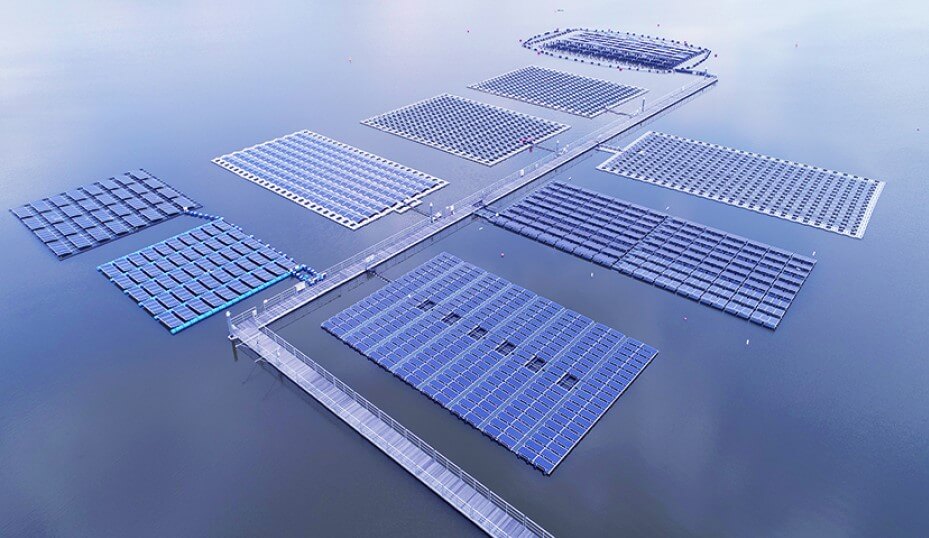
SERIS solar PV testbed at Tengeh Reservoir, showcases the potential for water-bound PV solutions for emerging Asia
(Source: SERIS)
Soft Infrastructure: Newer Paradigms for Sustainable Financing
While the need for hard sustainable infrastructure is vital as highlighted in previous paragraphs, attention must also be paid to soft infrastructure as well, in order to pave the runway for such sustainable infrastructure to occur.
For instance, soft infrastructure such as financial methods and systems must incorporate sustainable elements, such as adopting Environmental, Social and Governance (ESG) criteria or green forms of financing. To that end, Singapore has been employing initiatives to promote sustainable financing for infrastructure. For instance, the Monetary Authority of Singapore (MAS) introduced the Green Bond Grant Scheme in 2017, which helps to offset the expenses attributable to obtaining external review for sustainability & green bonds. The scheme has since been expanded in 2019 to included qualifying social and sustainability bonds, highlighting the Singapore government’s efforts in promoting sustainable financing.
MAS has also sought to promote sustainability in infrastructure insurance, participating in the Sustainable Insurance Forum (SIF) and developing the insurance-linked securities (ILS) market as an alternative risk financing solution in reducing the costs of natural catastrophe events. To further this objective, MAS has introduced an insurance-linked securities (ILS) grant scheme to defray costs associated with using catastrophe bonds in Singapore. These initiatives help to promote Singapore as a hub for the development of sustainable infrastructure in emerging Asia.
Similarly, the Singapore Exchange has also introduced sustainability reporting for mainboard listed companies on a “comply or explain” basis.
On the private sector side, developers and financiers have also been proactive and sought to introduce sustainable financing into infrastructure projects. This is in part driven by standards on green financing, such as the APLMA Green Loan principles, ASEAN Green Bond Standards and Climate Bonds Standard & Certification Scheme. For instance, Singapore developer City Developments Limited (CDL) introduced Singapore’s first green bond to financing the retrofitting of Republic Plaza to improve energy efficiency. Singapore-headquartered DBS Bank also introduced a green bond framework in recent years, which specifies the eligibility criteria for green bond utilisation for projects and existing assets.
These initiatives by the Singapore ecosystem creates a runway for sustainable infrastructure development in Emerging Asia.
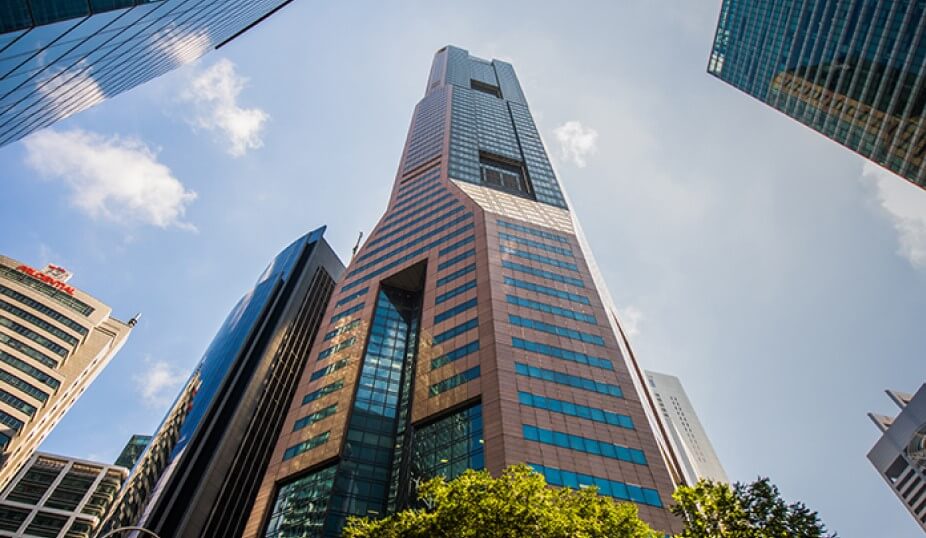
Singapore’s 1st green bond financed the retrofitting of Republic Plaza, which was awarded BCA Green Mark Platinum in 2018
(Source: CDL)
Conclusion: Creating Runway for Future Success
The path for sustainable infrastructure in Emerging Asia is still at a nascent state, however, it is important for the runway to be laid in order to ensure the region does not miss out on potential growth opportunities.
Implementing sustainable infrastructure projects would require emerging countries like India, Bangladesh, Indonesia, Vietnam and Cambodia, etc. to change the way they approach infrastructure planning.
Neil Walmsley, Singapore Planning Leader at Arup, highlights how the ‘X’ factor for sustainable infrastructure will be to incorporate systems thinking in decisions making. This would mark a departure from how infrastructure planning is currently done, whereby individual projects are addressing individual needs and problems, rather than the overall city or regional developmental needs.
Equally, the benefits of sustainable infrastructure must be emphasised to Emerging Asia, especially given how sustainable infrastructure is associated with expensive, costly projects. Søren Holm Johansen, Group Executive Director at Ramboll Group, stated that economic and market forces are driving the adoption of sustainable infrastructure in the future.
Projects are becoming more attractive as costs of sustainable infrastructure continue to fall over time. Similarly, the positive externalities generated from sustainable infrastructure, such as increased commercial land value, emphasises the commercial benefits sustainable infrastructure can bring to businesses and governments. However, such economic, social and environmental benefits need to be more consistently acknowledged and reflected in decision making. This highlights a greater need for partnerships between businesses and governments to coordinate and develop stronger mechanisms, in order to ensure the benefits of sustainable infrastructure can be captured by society.
All in all, while multiple factors and reasons are driving the rise of sustainable infrastructure from different angles, one important factor required for the successful implementation of sustainable infrastructure will be the creation of partnerships between private and public sector stakeholders in the infrastructure ecosystem. Such partnerships are already being formed in the Singapore ecosystem, for both soft and hard infrastructure. This showcases the ability to lay the runway for sustainable infrastructure to truly take off in Emerging Asia.
This article was collated by Seth Tan and Quek Ee Pin, and benefitted from the sharing of the following contributors:
- Søren Holm Johansen, Group Executive Director, Ramboll Group
- Nick Merritt, Global Head of Infrastructure, Mining and Commodities, Norton Rose Fulbright
- Neil Walmsley, Singapore Planning Leader, Arup
- Dr Victor Sim Siang Tze, Head of Resiliency, Surbana Jurong
References
- 100 Resilient Cities. (2017). Bangkok Resilience Strategy. Bangkok, Thailand.
- ASEAN Centre for Energy (ACE). (2016). Levelised Cost of Electricity of Selected Renewable Technologies in the ASEAN Member States. Jakarta, Indonesia.
- ASEAN Centre for Energy (ACE). (2018). The 5th ASEAN Energy Outlook (AEO5). Jakarta, Indonesia.
- Asian Development Bank. (2017). Meeting Asia's Infrastructure Needs. Mandaluyong City, Philippines.
- BBC Indonesia. (2018). Jakarta, the fastest-sinking city in the world. Retrieved from https://www.bbc.com/news/world-asia-44636934
- Bloomberg. (2018). Hong Kong On Lockdown as Typhoon Mangkhut Arrives. Retrieved from https://www.bloomberg.com/news/articles/2018-09-14/super-typhoon-mangkhut-slams-philippines-with-category-5-power
- Building & Construction Authority. (2018). BCA Awards 2018. Singapore.
- Greater Sydney Commission. (2016). Towards our Greater Sydney 2056. Sydney, Australia.
- Land Transport Authority. (2019). Land Transport Master Plan 2040. Singapore.
- Ministry of the Environment and Water Resources. (2019). Zero Waste Nation. Retrieved from Towards Zero Waste: https://www.towardszerowaste.sg/zero-waste-nation/
- National Environment Agency. (2018). Integrated Management Facility Brochure.
- PPCA, IGES, Nexus, UN Environment, CCCA. (2018). Phnom Penh Waste Management Strategy and Action Plan 2018-2035. Phnom Penh, Cambodia.
- Public Utilities Board. (2019). PUB to deploy Singapore’s First Large-Scale Floating Solar System by 2021. Retrieved from PUB Website: https://www.pub.gov.sg/news/pressreleases/PUBtodeploySingaporesFirstLargescaleFloatingSolarSystemby2021
- Surbana Jurong Academy. Sim V, & Lee JX (2019). Flooding: How Can Cities Be Prepared for an Increasingly Unpredictable Future? Singapore: Surbana Jurong. Retrieved from https://surbanajurong.com/perspective/flooding-how-can-cities-be-prepared-for-an-increasingly-unpredictable-future/
- The World Bank. (2011). The World Bank Supports Thailand's Post-Floods Recovery Effort. Retrieved from https://www.worldbank.org/en/news/feature/2011/12/13/world-bank-supports-thailands-post-floods-recovery-effort
- United Nations. (2018). Department of Economic & Social Affairs, Population Division. Retrieved from World Urbanization Prospects: The 2018 Revision: https://population.un.org/wup/
- World Bank Group. (2016). Regenerating Urban Land: A Practitioner's Guide to Leveraging Private Investment. Washington DC, USA.
- World Meteorological Organization. (2018). Above average warmth, high impact weather continues. Retrieved from World Meteorological Organization Website: https://public.wmo.int/en/media/news/above-average-warmth-high-impact-weather-continues
